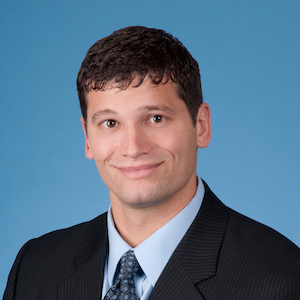“The PTAB found that evidence of industry skepticism, including the skepticism of the FDA during Eli Lilly’s clinical trials, supported a conclusion of non-obviousness.”
 The U.S. Court of Appeals for the Federal Circuit recently affirmed the Patent Trial and Appeal Board’s (PTAB) decision upholding the patentability of Eli Lilly & Co.’s patent claims directed to reducing toxicity of a chemotherapy agent. In so holding, the Federal Circuit cited the Food and Drug Administration’s (FDA’s) skepticism of the efficacy of the methods as evidence supporting non-obviousness. See Neptune Generics, LLC v. Eli Lilly & Co., Nos. 2018-1288, 2018-1290, 2019 U.S. App. LEXIS 12492 (Fed. Cir. Apr. 26, 2019) (Before Moore, Wallach, and Hughes, J.) (Opinion for the Court, Moore, J.)
The U.S. Court of Appeals for the Federal Circuit recently affirmed the Patent Trial and Appeal Board’s (PTAB) decision upholding the patentability of Eli Lilly & Co.’s patent claims directed to reducing toxicity of a chemotherapy agent. In so holding, the Federal Circuit cited the Food and Drug Administration’s (FDA’s) skepticism of the efficacy of the methods as evidence supporting non-obviousness. See Neptune Generics, LLC v. Eli Lilly & Co., Nos. 2018-1288, 2018-1290, 2019 U.S. App. LEXIS 12492 (Fed. Cir. Apr. 26, 2019) (Before Moore, Wallach, and Hughes, J.) (Opinion for the Court, Moore, J.)
Neptune Generics, LLC, Fresenius Kabi USA, LLC, and Mylan Laboratories Ltd. (collectively, the Petitioners) filed three petitions for inter partes review (IPR) against claims 1-22 of U.S. Patent No. 7,772,209 (the ?209 patent) owned by Eli Lilly & Co. The ?209 patent generally relates to methods of administering folic acid and a methylmalonic acid (MMA) lowering agent, such as vitamin B12, before administering pemetrexed disodium, a chemotherapy agent, to reduce the toxic effects of pemetrexed. The PTAB found that the ?209 patent was not unpatentable as obvious because it was not known in the art to pretreat pemetrexed with vitamin B12 along with folic acid and the skepticism of others, specifically the FDA, supported a conclusion of non-obviousness. The Federal Circuit found that substantial evidence supported the PTAB’s findings and affirmed.
Petitioners filed three IPR petitions against the ?209 patent, each asserting a different combination of references. All petitions, however, asserted the same two references: a 1998 abstract by C. Niyikiza et al. (Niyikiza I) and European Patent Application 0 595 005 A1 (EP005). The Board found that the ?209 patent was not obvious because a skilled artisan would not have been motivated to administer an MMA lowering agent such as vitamin B12 in addition to folic acid to reduce the toxic effects of pemetrexed. The PTAB found that it was known in the prior art that pretreatment with folic acid reduces the toxicity associated with administration of pemetrexed because folic acid deficiency is associated with elevated levels of homocysteine, which itself is a predictor of pemetrexed toxicity. However, there was no evidence in the prior art of any relationship or correlation between elevated levels of MMA—which is associated with vitamin B12 deficiency—and pemetrexed toxicity. In other words, there was no evidence in the prior art of any understanding or correlation between administering an MMA lowering agent such as vitamin B12 and reduced pemetrexed toxicity. As a result, a person of ordinary skill in the art would not be motivated to add an MMA lowering agent such as vitamin B12 in addition to folic acid to reduce pemetrexed toxicity. The Board’s conclusion that there was no motivation in the prior art to pretreat with both folic acid and vitamin B12 to reduce pemetrexed toxicity was supported by substantial evidence, and, thus, the Federal Circuit affirmed.
Eli Lilly’s Statements to the FDA
Petitioners also argued that the Board erred in failing to consider Eli Lilly’s statements to the FDA regarding pretreatment with folic acid and vitamin B12 and by failing to preclude Eli Lilly from taking contrary positions during the IPRs. During clinical trials for Eli Lilly’s chemotherapy agent, Eli Lilly “inform[ed] the FDA that the prior art suggested that pretreating with folic acid and B12 was a no-risk, predictable way to lower pemetrexed-induced fatalities by lowering pretreatment homocysteine levels.” Petitioners argued that these statements were indicative of the state of the art and the background knowledge of a skilled artisan at the time the ?209 patent was filed. The Federal Circuit deferred to the Board’s factual determination and declined to find error, noting that “[w]hile, a patent owner’s own disclosures to the FDA may be considered in assessing the state of the prior art, . . . a fact finder must not allow its analysis to be distorted by hindsight bias.” Because the Board’s decision not to consider Eli Lilly’s statements was not error, the Federal Circuit affirmed.
Skepticism Supports Non-Obviousness
The Board also found that evidence of industry skepticism, including the skepticism of the FDA during Eli Lilly’s clinical trials, supported a conclusion of non-obviousness. In response to a number of fatalities during clinical trials, Eli Lilly suggested supplementing administration of pemetrexed with folic acid and vitamin B12. The FDA was skeptical, noting that the evidence cited by Eli Lilly “does not appear to support the addition of vitamins.” The Federal Circuit rejected Petitioners’ arguments that to support non-obviousness, the evidence must suggest that a proposed solution is “technically infeasible,” “unworkable,” or “impossible.” The Federal Circuit noted that “[t]his position is not consistent with our caselaw, which recognizes a range of third-party opinion that can constitute skepticism.” Even though “evidence that third parties thought the invention was impossible might be entitled to more weight,” the FDA’s skepticism in this case “fall[s] within that range.” As a result, the Board did not err in finding that the FDA’s skepticism regarding the efficacy of adding vitamin B12 supported a finding of non-obviousness.
Further, the Federal Circuit rejected Petitioners’ argument that the ?209 patent was directed to patent ineligible subject matter, noting that the subject matter that can be asserted in an IPR petition is limited to invalidity based on 35 U.S.C. §§ 102 and 103. Because patent ineligibility under 35 U.S.C. § 101 is not a ground that can be raised in an IPR, the Federal Circuit declined to consider whether the ?209 patent was invalid on that ground.
Finally, the Federal Circuit affirmed the Board’s non-obviousness determination as to the ?209 patent’s dependent claims, even though the Board did not directly address their patentability in its decision.
The ruling demonstrates that a patent owner’s statements to administrative bodies such as the FDA can be considered in determining the state of the prior art, though it does raise the risk that the court or Board’s analysis will be infected with hindsight bias. Evidence that others were worried, skeptical, or surprised about an invention can support a non-obviousness determination, though “evidence that third parties thought the invention was impossible might be entitled to more weight.”

![[IPWatchdog Logo]](https://ipwatchdog.com/wp-content/themes/IPWatchdog%20-%202023/assets/images/temp/logo-small@2x.png)


![[Advertisement]](https://ipwatchdog.com/wp-content/uploads/2024/04/Artificial-Intelligence-2024-REPLAY-sidebar-700x500-corrected.jpg)
![[Advertisement]](https://ipwatchdog.com/wp-content/uploads/2024/04/UnitedLex-May-2-2024-sidebar-700x500-1.jpg)
![[Advertisement]](https://ipwatchdog.com/wp-content/uploads/2024/04/Patent-Litigation-Masters-2024-sidebar-700x500-1.jpg)

![[Advertisement]](https://ipwatchdog.com/wp-content/uploads/2021/12/WEBINAR-336-x-280-px.png)
![[Advertisement]](https://ipwatchdog.com/wp-content/uploads/2021/12/2021-Patent-Practice-on-Demand-recorded-Feb-2021-336-x-280.jpg)
![[Advertisement]](https://ipwatchdog.com/wp-content/uploads/2021/12/Ad-4-The-Invent-Patent-System™.png)






Join the Discussion
One comment so far.
Anon
May 12, 2019 11:45 amThis article (late in coming as several other patent blogs have previously touched upon the case) skirts up to — but does not engage — a very real NEW wrinkle here.
This being a Precedential opinion means that the law concerning applicant admissions has changed.
There are several places in the MPEP that are now incongruent with the choice of the court here to not apply a strict admissions against interest.
“Because the Board’s decision not to consider Eli Lilly’s statements was not error, the Federal Circuit affirmed.”
Making this to be “not error” changes the Black Letter prior treatment that an admission as to prior art (even if that admission were in fact in error) MADE what was admitted to be prior art TO BE prior art against the one making the admission.
The late Ed (Ned) Heller and I included this bit of (now prior?) patent profanity in discussions around the change in modern prosecution to thin out the “Background” section of applications expressly because an applicant need not go into detail in setting out the prior art. As well, I have pointed out that this historically aligned with the demise of the Jepson claim format. While I have not seen a recent study on the (non)use of that optional claim format, the state and trend shown several years ago – if continued – would probably place current use at about the one half percent of all claims range.
Does this new “anti-profanity” “we won’t hold admissions to be prior art” Precedential case indicate a possible move to beefier specs and more applicant discussion of prior art?
Or is this merely an aberration (and possibly more reflecting a Pharma case than a more general thrust)?
Given the still prevalent general “anti” tendencies of the courts, I would not bank on this resulting in applicants adding prior art discussions or reversing the trend for Jepson claim format use.